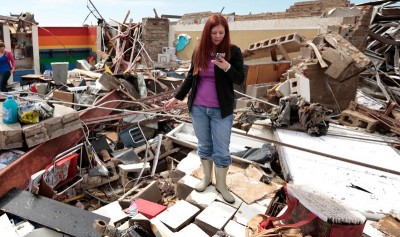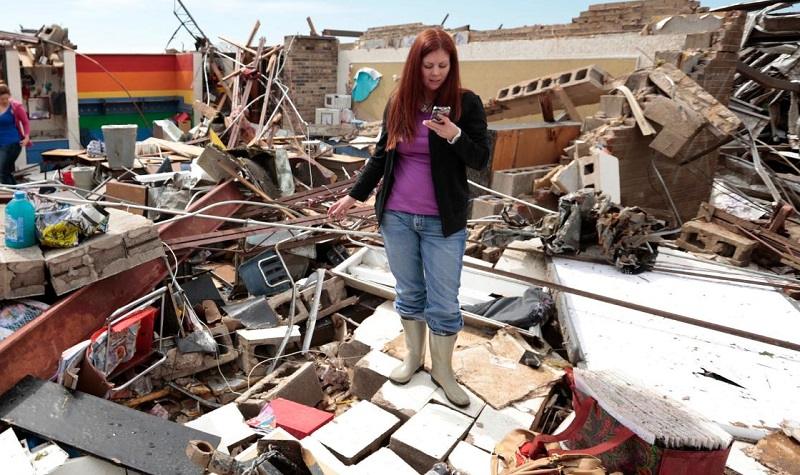 There are so many events capable of severing power on an annual basis that it’s hard to believe people are shocked when a power failure occurs. From natural causes such as snow and ice storms to manmade causes such as accidents and an aging power grid, loss of power is something that everyone needs to plan for. Yet, each time a power failure of even modest proportions occurs, the media captures images of people frantically looking for a place to charge their cell phones, and even pirating power from public buildings in order to keep their phones alive.
There are so many events capable of severing power on an annual basis that it’s hard to believe people are shocked when a power failure occurs. From natural causes such as snow and ice storms to manmade causes such as accidents and an aging power grid, loss of power is something that everyone needs to plan for. Yet, each time a power failure of even modest proportions occurs, the media captures images of people frantically looking for a place to charge their cell phones, and even pirating power from public buildings in order to keep their phones alive.
The modern cell phone is much more than just a voice communication device; it’s a communications powerhouse that keeps us in touch with friends, family and current events. In fact, the average cell phone has more ways of communicating than just about any other communications device on the planet. Consider that a cell phone can communicate via:
- Voice
- Text messages (SMS and MMS)
- Instant messaging
- Internet postings on social media sites
- Point to point voice over ip calls via software such as Skype
- The ability to receive radio transmissions via the internet
Cell phones really are disaster communication wunderkinds, and you definitely want them up and running the next time a disaster strikes. Even if there is no cell signal available, most modern smart phones can piggyback off local wifi and still be of some use. Even if no wifi is available, a cell phone still has enough onboard storage capability to store hundreds of vital survival manuals, maps, data and other potentially life-saving information, right at your fingertips. Having extolled the virtue of the modern cell phone, and describing just how useful it is, it’s a wonder that more people don’t have multiple methods of keeping it charged.
An Amazing Breakthrough In Compact Portable Backup Power!
Modern cell phone batteries have come a long way since the old brick phones of the late 80s, which had batteries with run times measured in minutes. Today, cell phones can usually go a couple of days without needing a charge, assuming the phone isn’t used very much – but therein lies the rub. During a disaster, you’ll be using the phone more than usual – if not in an attempt to make communications with someone, then likely to get information on the disaster itself. And while modern lithium ion battery construction has resulted in smaller batteries that last longer, modern cell phone construction has resulted in cell phones with larger, more powerful screens and faster processors, which drain battery life faster. Bottom line: You need a series of bulletproof methods of charging your phone. Here’s what you need.
1. Wall Charger: Every cell phone comes with a wall charger, yet few people pack the charger with them. Realize that during a disaster and even a power failure, there is often sufficiently available power to charge your phone – yet most people don’t have the charger on their person! It’s a great idea to carry your wall charger in your go bag or even in your car. Even during a power failure, lots of industrial and commercial buildings have things like backup power generators, power packs or uninterruptible power supplies for their computers. Also, many people have car inverters, which you could access – if you have your charger.
2. 12 Volt Car Charger: Did you purchase the car charger for your brand of phone? Today’s phones are even easier to charge via your car than before, when each manufacturer made their own proprietary vehicle charging cables. Most phones today can charge via USB, and there are a plethora of 12 volt cigarette style USB chargers, most of which are available for under $15. Cars are everywhere, and an idling car can charge a cell phone practically forever. If you don’t have a car charger for your cell phone, you’re missing out on an easy and free way to charge your phone.
3. Solar Charger and Backup Battery: Advances in technology and decreases in the cost of materials have conspired to make small solar panels so inexpensive as to be called cheap. Today, a modestly sized solar charger for a cell phone – one that is just slightly bigger than the phone itself, is available for under $30. Many of these solar chargers also include an onboard battery, meaning you can leave the charger out in the sun with no cell phone attached, and the sun will charge up the internal battery. Then, even if a power failure hits at night, you can still use the stored energy within the charger’s battery to juice up your cell phone. A solar charger should really be a mandatory accessory for anyone who frequently travels or has a long commute. Additionally, there are compact backup battery power units that can charge cell phones, laptops and even jump start cars – all for around $100.
4. Solar Powered Generator: Solar panels are ubiquitous among American homes, and for good reason – solar power is clean, silent, renewable, and prices on solar products have fallen to the point where the average person can easily afford a solar system of some kind. A solar powered generator can meet your small needs such as charging cell phones but also can provide power to appliances during an electrical outage.
Keeping your cell charged up is really not rocket science, and it’s hard to believe that in today’s day and age of technology, people are still having their phones go dead after just a few hours of power loss. A modern cell phone needs very little wattage to charge (around 4 watts per hour), and there really isn’t a valid excuse for letting your phone go dead during a disaster. A few dollars spent on some crucial accessories will ensure that you have indefinite power for your phone when you need it most.
Sign up for Off The Grid News’ weekly email and stay informed about the issues important to you











